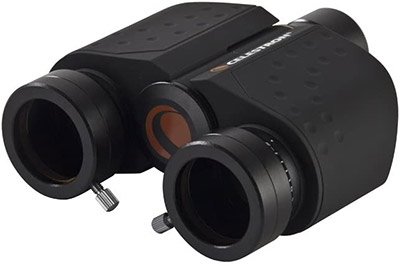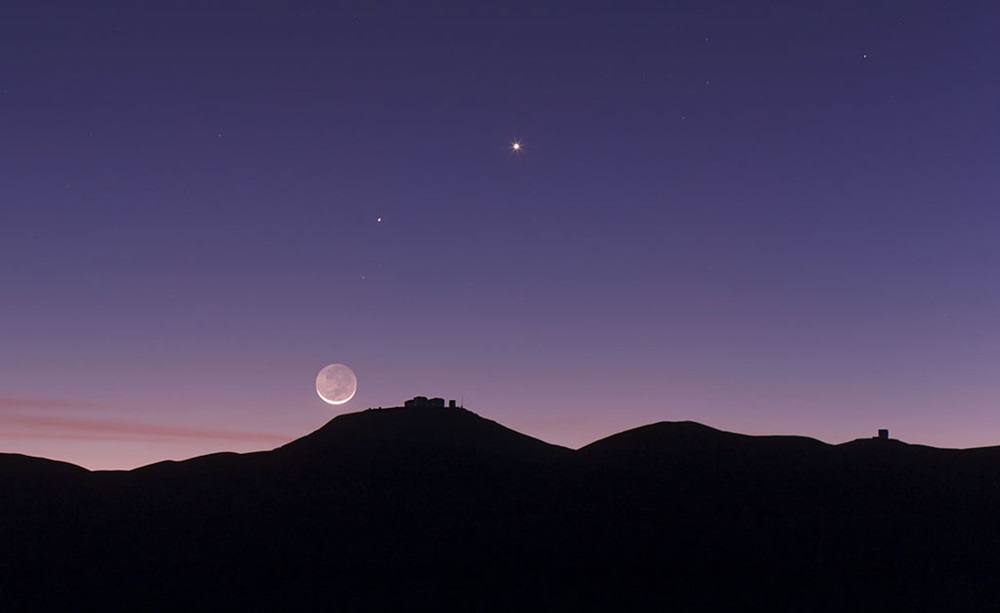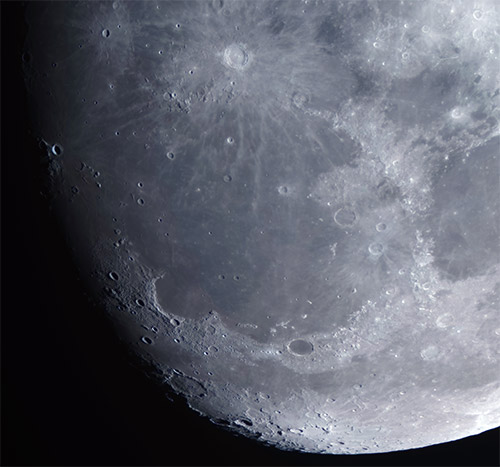We all want to get the maximum value and the best views out of our telescopes. When you first purchase a telescope, it comes bundled with accessories that are meant in the best case for general viewing conditions, and in the worst scenario, to save money to meet a certain price point. It is here when the opportunity to do some optimization presents itself. We have already talked about how to upgrade a telescope, but now, it’s time to delve into the specifics of how to upgrade your eyepieces to get the best views out of the planets in the Solar System.
Choosing the best eyepiece for viewing planets is going to depend mostly on the telescope you already own. You need to select an eyepiece that pairs well with it so you don’t waste money on something that is too low-powered, or too high-powered for your setup. This guide will show you how.
What magnification do you need to view planets?
In general, when it comes to observing planets, you want as much magnification as possible. Planets in the Solar System are close enough to Earth that plenty of details and features can be captured through the lens of a home telescope, and optical errors like commas are not as much of a problem as with deep space objects. For planets, you want to maximize contrast, colors, and details.
There are a couple of exceptions to this rule, like Jupiter, but we will go into detail about that later. For the most part, you can go to the maximum useful magnification your telescope supports, or very close to it. The exception to the rule here would be telescopes with a bigger aperture than 8″ (200mm) where due to their size, it is hard to get to the highest levels of magnification.
You can calculate your maximum useful magnification with a simple formula, but here’s a quick table for the most common apertures. Please note these are estimates, they might vary a bit depending on the type of telescope you own and its focal length, but for the most part, these are “close enough” estimations:
| Aperture | Max Useful Magnification |
|---|---|
| 70mm (2.7″) | 135x |
| 80mm (3.14″) | 157x |
| 100mm (3.9″-4″) | 195x |
| 130mm (5″) | 255x |
| 150mm (6″) | 295x |
| 177mm (7″) | 350x |
| 200mm (8″) | 390x |
For the specific use case of viewing planets, sometimes in telescopes below the 6″ (150mm) range, you can get away with using a magnification slightly higher than recommended, especially when looking at Mars or the Moon. This is because the aperture in these devices is still small enough that the lens rarely has the tiny optical imperfections that inevitably happen during the manufacturing of larger lenses. If you want to try that, use the max magnification of the next aperture range in the table below. For example, for a 4″ telescope, try the max magnification of a 5″, which would be 255x.
You can calculate the magnification of an eyepiece by dividing the telescope’s focal length by the eyepiece focal length. For example, a simple home refractor telescope with a focal length of 900mm with a 6mm eyepiece will give you a 150x magnification.
The focal length of the eyepiece is the number advertised when you get it (10mm, 15mm, etc.). The focal length of your telescope can be found in the tech specs.
With that in mind, we can now start looking at specific eyepieces for each of the planets, but first, there’s another accessory not many people know about that can help.
Binoviewers/Binocular Viewers: Your best friend for watching planets
If you just started stargazing, you might not even know about binocular viewers, or binoviewers for short. Binoviewers are one of the telescope accessories that will improve both your optics, and viewing experience the most.
These devices go in the eyepiece slot of your telescope, and what they do is turn this single slot into a dual device so you can use both eyes, just like binoculars. The advantage of this is that using both eyes allows you to better focus, and puts a lot less strain on your eyes, resulting in both a better image and a better viewing experience. They are better suited for closer objects, in fact, they are mostly used for watching things down here on Earth, like with bird-watching scopes and similar use cases.
The only problem with binoviewers and the main reason not a lot of people use them is simply their cost. The optics inside them are complex so they can duplicate the image without adding optical flaws, so they can get expensive. On top of that, you have to add that since now you have two eyepiece slots, you need two of each eyepiece you want to use.
Another limitation is they work best, and out-of-the-box with Schmidt-Cassegrain, and Maksutov-Cassegrain telescopes. The more common reflectors, and refractors might require a 2x Barlow lens to focus.
But if you have the budget for it, a binoviewer is going to make more of a difference than almost any eyepiece you could get.
For specific recommendations, the Celestron Stereo Binocular Viewer, or the Orion Binocular Viewer are both great options, and both fit and work with standard 1.25″ eyepiece slots.
Celestron Stereo Binocular Viewer

Orion Binocular Viewer

Best eyepiece for viewing the Moon
Let’s get into the specifics of what type of eyepiece is better suited to observe each of the objects in the Solar System. Let’s start with the easiest one.
The Moon is close enough to Earth that pretty much any telescope will manage to get a good view out of it. But here we are all about optimizing the viewing experience. So let’s go deeper.
There are two types of eyepieces that you can use when looking at the Moon. Which one you need is going to depend on what type of shot or frame you want to get.
For wide shots, or even “down from Earth” shots like the one in the photo below, you want to use a low magnification eyepiece with excellent contrast.

For this case, you can go with a low budget as the eyepieces in this range are not expensive. Getting an ultra-wide Plossl one will help if you are looking to take photos. Here are some options of eyepieces you can get depending on your telescope’s focal length and budget.
| Focal Length | Eyepiece size | Magnification | Recommendation |
|---|---|---|---|
| 900mm | 25mm | 36x | SVBONY 25mm |
| 1000mm | 20mm | 50x | 66-Degree Ultrawide 20mm |
| 2000mm | 20mm | 100x | Vixen Optics 39206 |
If you want to get the maximum amount of detail and take close ups, like the one in the following photo, you can go as with as much magnification as your telescope allows. Again, you can find the magnification calculations and options in the table below.

| Focal Length | Eyepiece size | Magnification | Recommendation |
|---|---|---|---|
| 900mm | 6mm | 150x | Meoptex 6mm |
| 1200mm | 5mm | 240x | Orion 8885 Edge-On Planetary 5mm |
| 2000mm | 7mm | 285x | Televue DeLite 7mm |
Best eyepiece for viewing Mars

Mars is one of the most beautiful targets you can observe with a telescope. It’s still close enough to Earth that it is possible to recognize some of the details in its geology as well as its icy poles and plenty of different color tones on its surface.
Mars is best viewed in the 150x-250x magnification range if what you are looking for is extreme detail. Under perfectly clear skies and when the orbits are at their closest points, you can go as high as 300x although you will need to start chasing it at that point. With a professional-grade telescope, you can go even higher to the 600x range but that’s not going to work with most enthusiast-level devices.
The following table has some examples of what eyepieces you can use for certain telescopes. Remember most telescopes use a standard size for eyepieces, so they should all fit. Simply pick the one that resembles most the type of telescope you have.
| Telescope | Aperture | Focal length | Eyepiece size | Magnification | Recommendation |
|---|---|---|---|---|---|
| Orion Observer | 70mm | 700mm | 8mm | 116x | GoSky 8mm Plossl |
| Celestron 114LCM | 114mm | 1000mm | 7mm | 142x | Astromania 82deg SWA |
| Celestron Nexstar 6SE | 152mm | 1500mm | 6mm | 150x | Orion Edge-on planetary 6mm |
| Celestron 11″ Schmidt-Cassegrain | 279mm | 2800mm | 8mm | 350x | Televue 8mm Plossl |
Best eyepiece for viewing Jupiter

Jupiter is a bit of a special case when it comes to planetary viewing because it doesn’t have much contrast. This is due to its brown/dark orange shades that get a bit lost in the dark background of space.
Because of this, it is one of the few planets where you don’t want to max out on magnification to get the best views.
Jupiter looks best in the 100x-200x range for enthusiast-level telescopes. Unless you can get perfect sky conditions, you’d be wasting resources going beyond that.
For professional and high-end telescopes, you can higher to the 300x range, but it’s still below what you would use for other planets.
This low(er) magnification also helps in capturing the bigger of the many moons Jupiter has which are also great observational subjects.
The best eyepiece for viewing Jupiter is going to depend on your telescope. These are our eyepiece recommendations for some telescopes in various price and aperture ranges. Pick the one that is closest to your scope.
| Telescope | Aperture | Focal length | Eyepiece size | Magnification | Recommendation |
|---|---|---|---|---|---|
| Orion Observer | 70mm | 700mm | 10mm | 70x | Orion 08736 10mm Plossl |
| Celestron Astromaster 114EQ | 114mm | 1000mm | 10mm | 100x | Orion 08736 10mm Plossl |
| Celestron Nexstar 6SE | 152mm | 1500mm | 10mm | 150x | Meade Instruments Series 5000 10mm |
| Celestron 11″ Schmidt-Cassegrain | 279mm | 2800mm | 8mm | 350x | Explore Scientific 82° 14mm |
Best eyepiece for viewing Saturn

Saturn is one of the most popular targets to observe in the Solar System. We all want to get the best view of its rings and moons.
Saturn’s light yellow/cream colors help a lot in generating sharp pictures thanks to the contrast they have with the background.
Thanks to this, you can use high magnification eyepieces to observe Saturn, specially if you are lucky enough to find it on a night with clear skies.
For home/amateur telescopes in the 70mm-200mm aperture range you can go as high as 200x-250x magnification in perfect conditions, but you generally will want to stay in the 120x-200x range on an average night.
Higher end devices can go a bit higher to magnifications of 300x-400x.
In the following table, you can find our recommended eyepieces for a few telescopes as an example. You can find the one most similar to your telescope, and you should get similar results with that eyepiece.
Experimenting with a Barlow lens to get to those magnifications might also help improve your results.
| Telescope | Aperture | Focal length | Eyepiece size | Magnification | Recommendation |
|---|---|---|---|---|---|
| Orion Observer | 70mm | 700mm | 7mm | 100x | 7-21mm Continuous Zoom Eyepiece |
| Celestron Astromaster 114EQ | 114mm | 1000mm | 6mm | 166x | Orion 8920 6mm |
| Celestron Nexstar 6SE | 152mm | 1500mm | 6mm | 250x | Orion 8883 Planetary Edge-On Eyepiece |
| Celestron 11″ Schmidt-Cassegrain | 279mm | 2800mm | 7mm | 400x | Televue DeLite 7mm |
Enjoyed this article?
Get daily 10-minute PDFs about astronomy to read before bed!
Sign up for our upcoming micro-learning service where you will learn something new about space and beyond every day while winding down.







